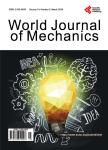Static and Vibration Analysis of an Aluminium and Steel Bus Frame
作者机构:Department of Applied SciencesUniversity of Quebec at ChicoutimiChicoutimiQuebecCanada
出 版 物:《World Journal of Mechanics》 (力学国际期刊(英文))
年 卷 期:2018年第8卷第4期
页 面:112-135页
学科分类:1002[医学-临床医学] 100214[医学-肿瘤学] 10[医学]
基 金:The financial support of the Aluminium Research Center(REGAL)is greatly appreciated
主 题:Bus Frame Aluminum Steel Modal Analysis Static Stress Analysis
摘 要:The transport sector is increasing day by day to satisfy the global market requirement. The bus is still the main mode of intercity transportation in Canada. Despite, an essentially unchanged conception, the total weight of the bus has increased by over 25% during the last three decades. To solve this problem, industrialists have moved to the use of light metals in the transportation field. Therefore, use of lightweight materials, such as aluminum is essential to reduce the total weight of bus. In this study, the focus is on the bus frame as it represents 30% of the total weight and it is the most stressed part of the bus. Its life duration is more important compared to that of all other elements. Thus, a study of the static and vibratory behavior would be very decisive. In this article, two types of analysis are carried out. First is the modal analysis to determine the natural frequencies and the mode shapes using a developed dynamic model of the bus. Because if any of the excitation frequencies coincides with the natural frequencies of the bus frame, then resonance phenomenon occurs. This may lead to excessive deflection, high stress concentration, fatigue of the structure and vehicle discomfort. In this case, the results analysis shows that the natural frequencies are not affected by the change of material. The second type of analysis is the linear static stress analysis to consider the stress distribution and deformation frame pattern under static loads numerically. For the numerical method, the frame is designed using SolidWorks and the analysis is made using Ansys WorkBench. The maximum Von Mises stress obtained for the static loading is in the same order for the three chassis frames studied. But in the case of the aluminium frame, the weight of 764 kg was reduced.



